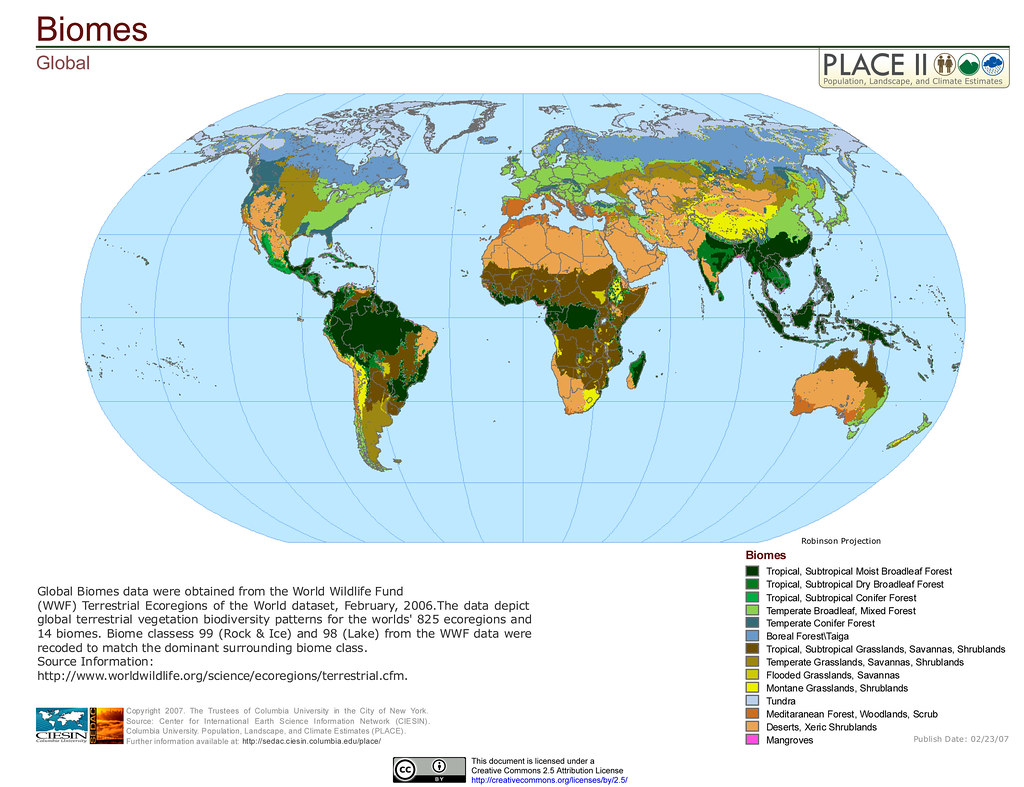Part 4 Plants for Horticultural Applications
30 Native Plants
Learning Objectives
- Describe native plants common to the horticulture industry.
Biodiversity is described as the variety of plants and other living organisms that interact with the non-living environment of a particular habitat or ecosystem. Regardless of the size or type, each organism is dependent on every other, either directly or indirectly through food webs and the natural processes of nutrient cycling and energy flow that sustain ecosystems. Plant biodiversity has an invaluable role in the function of ecosystems and the services that people obtain from them including:
- provision of clean air, water, food, materials, and medicines,
- regulation of climate, carbon storage, water and waste treatment, and erosion and disease control,
- support for pollination, biodiversity and habitat, and
- cultural benefits for health, education, recreation, relaxation, and spiritual well being.
Read more about the importance of ecosystem services at this link to FAO Ecosystem Services & Biodiversity [New Tab].[1]
Regardless of whether a plant occurs naturally in a place or has been planted indoors or outdoors for ornament or food value, as a species, it has a native home somewhere in the world. Native plant species originated and co-evolved in communities with other organisms in fourteen identified biomes around the world. Biomes are composed of groups of ecosystems with distinct vegetation types and climate patterns. They are typically named for the dominant vegetation type, such as a forest or grassland. Figure 7.1 shows a map of the distribution of the major biomes around the world.

With an understanding of plant biology, hardiness, and interactions with soils and climate, native species from different biomes can be successfully grown in landscapes and gardens around the world. For example, Gunnera manicata (gunnera) from South America and Impatiens walleriana (impatiens) from South Africa that originated in the Tropical, Subtropical Broadleaf Forest biome are often grown as ornamental garden plants. The magnificent specimen tree, Cedrus deodara (Deodar cedar) is native to the Tropical, Subtropical Conifer Forest while hedging plants Thuja occidentalis (white cedar) and Taxus cuspidata ‘Capitata’ (upright yew) originated in the Temperate Conifer Forest biome. Many species of the Temperate Broadleaf Mixed Forest biome are commonly grown in landscapes and gardens. Examples of deciduous specimen trees include Acer tataricum ssp. ginnala (Amur maple, Tatarian maple) and Syringa reticulata ‘Ivory Silk’ (Japanese lilac tree) from Eastern Asia, Cercis canadensis (redbud) and Quercus alba (white oak) from Eastern North America, and the European species Prunus padus var. commutata (European bird cherry), and Sorbus aucuparia (European mountain ash). Viburnum trilobum (highbush cranberry) is an understory shrub from northern North America while the closely related Viburnum opulus (European snowball) is native to Europe and Asia. Some familiar garden plants that originated in the Mediterranean Forest, Woodlands, Scrub biome are Cyclamen persicum (cyclamen), Helictotrichon sempervirens (blue oat grass), Lithodora diffusa ‘Grace Ward’ (blue lithospermum), and Rosmarinus officinalis (rosemary). View images of the plant examples available at this link to the KPU Plant Database [New Tab][2]. Now, complete the practice exercise.
Practice
Recognize plants native to world biomes.
Individual ecosystems within larger biomes are characterized by the naturally occurring communities of native plants and animals and the distinct soil types, land forms, and climate of the area. For example, a plant community of the Temperate Conifer Forest biome located in the Pacific Northwest region of North America would include conifers such as Pinus contorta var. contorta (shore pine), Pseudostuga menziesii (Douglas Fir), Thuja plicata (western red cedar), and Tsuga heterophylla (western hemlock). Depending on the specific site conditions, deciduous and broadleaf evergreen trees may include Alnus rubra (red alder), Arbutus menziesii (arbutus, madrona), Frangula purshiana (cascara), and Populus trichocarpa (black cottonwood, western balsam-poplar). Associated deciduous shrubs may include Ribes sanguineum (flowering currant, winter currant), Rubus spectabilis (salmonberry), Salix discolor (native pussy willow, pussy willow), and Symphoricarpos albus (snowberry). Some deciduous and evergreen native ferns are Adiantum pedatum (maidenhair fern) and Polystichum munitum (western sword fern). A few examples of the many native herbaceous flowering plants are Asarum caudatum (western wild ginger), Erythronium americanum (trout lily, adder’s tongue), Vancouveria hexandra (inside-out flower), and the semiaquatic Sagittaria latifolia (wapato, arrowhead, duck potato). Read more about plant communities and their distinct ecosystems at this link to Vegetation Regions, The Canadian Encyclopedia [New Tab].[3]
Historically, horticultural activities have had a significant impact on the geographic distribution of native plant species. Currently, landscape contractors, nurseries, garden centres, and mass-market chain stores are the largest distribution channels of native plants in addition to ornamental and floriculture products. The import and export of species for use in arboriculture, landscape horticulture, floriculture, turf, and food production sectors continues to shape the distribution of species in plant communities and ecosystems. While constructed landscapes and gardens may be considered artificial ecosystems, it is possible to plan and maintain communities of local native species and appropriate ornamental plants that support natural processes and ecosystem services.
Practice
Match the images of plants native to the Pacific Northwest.
Media Attributions
- Figure 7.1 Global Biomes by SEDACMaps is under a CC BY 2.5 Licence.
- https://www.fao.org/ecosystem-services-biodiversity/en/ ↵
- https://plantdatabase.kpu.ca/#gsc.tab=0 ↵
- https://www.thecanadianencyclopedia.ca/article/vegetation-regions ↵

